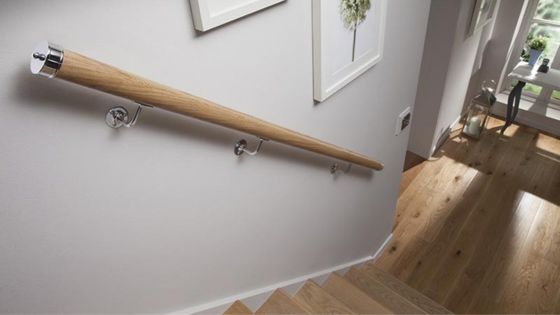Wall mounted handrails are an integral part of building design, providing crucial support and safety for individuals navigating staircases, corridors, and ramps. As per experts like Rootex, beyond their functional significance, these handrails contribute to the accessibility and overall aesthetic appeal of a space. In this blog post, we will explore the importance of wall-mounted handrails, considerations for their design and placement, installation procedures, and the wide-ranging benefits they offer in terms of accessibility, safety, and style. Discover how these unassuming fixtures can transform spaces, promoting inclusivity, instilling confidence, and elevating the overall user experience.
Promoting Accessibility and Safety:
Wall-mounted handrails play a vital role in creating an inclusive environment by ensuring equal access for individuals with varying mobility levels. They provide stability and support, allowing people to navigate stairs, ramps, and corridors with confidence. Handrails are especially crucial for those with disabilities, the elderly, and individuals recovering from injuries. By incorporating handrails, architects and facility managers demonstrate a commitment to accessibility and comply with relevant regulations, enhancing the overall safety of the space.
Design Considerations and Customization:
Wall-mounted handrails offer a wide range of design possibilities, allowing for customization to match the unique aesthetic and functional requirements of any environment. Factors such as material selection, finishes, and profile design should be considered. Textured surfaces and ergonomic profiles ensure a secure grip and reduce the risk of slips. Materials like stainless steel, wood, or vinyl offer versatility in terms of appearance and durability. Customization options enable handrails to seamlessly integrate into the overall design scheme, creating a cohesive and visually appealing space.
Proper Installation and Placement:
To ensure the effectiveness and longevity of wall-mounted handrails, proper installation and placement are crucial. It is recommended to engage experienced professionals who possess the necessary expertise and knowledge of safety standards. Handrails should be securely fastened using appropriate anchors and brackets capable of supporting the anticipated load. Compliance with building codes and accessibility guidelines is essential when determining the height and location of handrails, ensuring easy access and continuous support along desired routes.
Benefits Beyond Safety:
Wall-mounted handrails offer numerous benefits beyond safety and accessibility. They contribute to a sense of community and care, creating a welcoming environment for building occupants and visitors. Handrails reduce the risk of accidents, helping to mitigate liability concerns for businesses and organizations. Moreover, they enhance the overall perception and reputation of a space, leaving a positive impression on clients, customers, and guests. Handrails also aid in wayfinding, guiding individuals through complex or unfamiliar spaces and ensuring seamless navigation.
Maintenance and Longevity:
Regular maintenance and care are essential to ensure the longevity and effectiveness of wall-mounted handrails. Routine inspections should be conducted to identify any damage, loose fittings, or signs of wear. Cleaning handrails with appropriate non-abrasive agents preserves their appearance and hygiene. Timely repairs or replacements are crucial to maintaining safety and accessibility standards. Establishing a maintenance routine and providing staff training on proper care ensure that handrails remain in optimal condition, upholding their functionality and aesthetic appeal over time.
Conclusion:
Wall-mounted handrails go beyond their functional role, enhancing accessibility, safety, and style in various environments. Their installation promotes inclusivity, compliance with regulations, and a sense of care for building occupants and visitors. With careful consideration of design, placement, and maintenance, these unassuming fixtures can make a significant difference in creating welcoming and accessible spaces for all individuals.




















